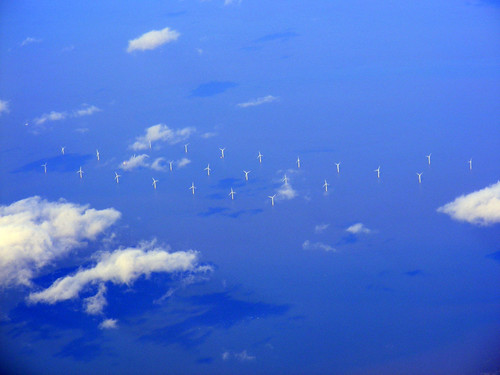In the competition for marine space, the fishing sector needs to prepare for management impacts from other directives than the EU Common Fishery Policy. Our purpose is to support the sector-specific stakeholders and policymakers and provide them with a tool for evaluating the spatial planning and management scenarios and spatial explicit fishery dynamics. This tool is informed by the different types of fishing activities and other activities occupying marine space. Continue reading “Impact assessment of spatial planning on the fishery economy and ecosystems”
Tag: impact assessment
How spatial planning constrains cross-border fisheries: the bio-economic DISPLACE evaluation on the Baltic Sea
 With our approach we aim at modelling the interaction between fisheries and stock spatial dynamics and assessing the interlinked consequences on both the vessel economy and the viability and sustainability of the harvesting (including the issue of energy efficiency for greener fisheries). We explore alternative fishing effort allocation scenarios and management options. As such, we are designing a benchmark tool for conducting management strategy evaluations to capture short-term economic reactions from individual fisherman tactical decision-making.
With our approach we aim at modelling the interaction between fisheries and stock spatial dynamics and assessing the interlinked consequences on both the vessel economy and the viability and sustainability of the harvesting (including the issue of energy efficiency for greener fisheries). We explore alternative fishing effort allocation scenarios and management options. As such, we are designing a benchmark tool for conducting management strategy evaluations to capture short-term economic reactions from individual fisherman tactical decision-making.
In the growing marine spatial planning (MSP) legislative context, concurrent uses of the sea are constraining the possibilities of displacing each vessel´s fishing activities. These new constraints call for studies that would empower the fishing industry with the right tools and knowledge to engage in fair MSP dialogues. We should consider the impact assessment and scenario evaluation of wider marine cross-sector use, exploitation of the marine environment and competition for space in a spatial evaluation tool and our ongoing evaluation is precisely dedicated to investigating this aspect.
Impact assessment of windmill parks on fisheries
 An on-going work is to apply and downscale the DISPLACE model to the commercially important and busy Western Baltic marine area where several utilisations of the sea currently coexist. In line with this it is evaluated to which extent the international plans for offshore windmill parks in the Baltic area are affecting the fishing opportunities per activity and fishing communities in the vicinity of the planned windmill sites.
An on-going work is to apply and downscale the DISPLACE model to the commercially important and busy Western Baltic marine area where several utilisations of the sea currently coexist. In line with this it is evaluated to which extent the international plans for offshore windmill parks in the Baltic area are affecting the fishing opportunities per activity and fishing communities in the vicinity of the planned windmill sites.
Hence, preliminary data mining shows that the planned offshore windmill parks in the area do not really interfere with important fishing grounds for the Danish fisheries. Continue reading “Impact assessment of windmill parks on fisheries”
DISPLACE – An individual-based model of fishing vessels
DISPLACE stands for a Dynamic, Individual-based model for Spatial fishing PLAnning and effort displaCEment. A paper in press can be found here
A wiki page has just been set up at www.displace-project.org/wiki to host documentation and links to the source code repository (in progress). Make it transparent, peer-checked and prone to cooperative development.
 The DISPLACE project is attempting to develop and provide a platform primarly for research purposes to transform the fishermen’s detailed knowledge into models, evaluation tools and methods that can provide the fisheries with research and advice. We need also models that can serve as a basis for decision support tools for (fishery) managers. Among other goals, economic benefit of stock replenishment and sustainable harvesting should be demonstrated. As a general rule, it is important to evaluate the combined ecological and economic impacts of fishery management before its implementation (i.e. impact assessment). Continue reading “DISPLACE – An individual-based model of fishing vessels”
The DISPLACE project is attempting to develop and provide a platform primarly for research purposes to transform the fishermen’s detailed knowledge into models, evaluation tools and methods that can provide the fisheries with research and advice. We need also models that can serve as a basis for decision support tools for (fishery) managers. Among other goals, economic benefit of stock replenishment and sustainable harvesting should be demonstrated. As a general rule, it is important to evaluate the combined ecological and economic impacts of fishery management before its implementation (i.e. impact assessment). Continue reading “DISPLACE – An individual-based model of fishing vessels”
